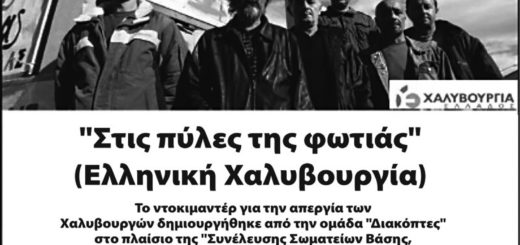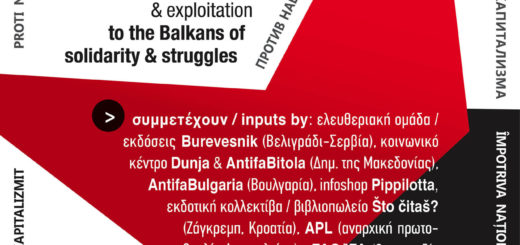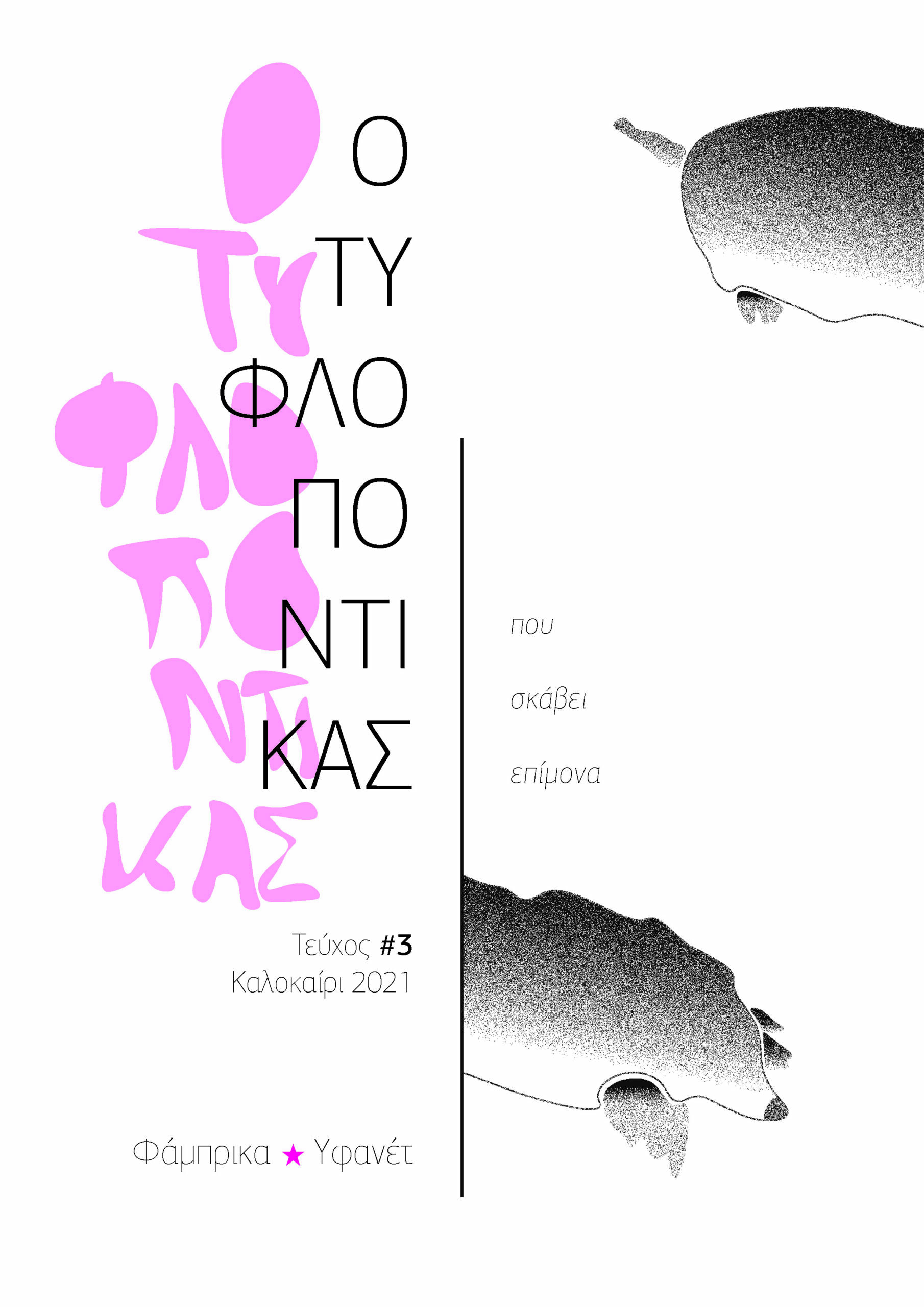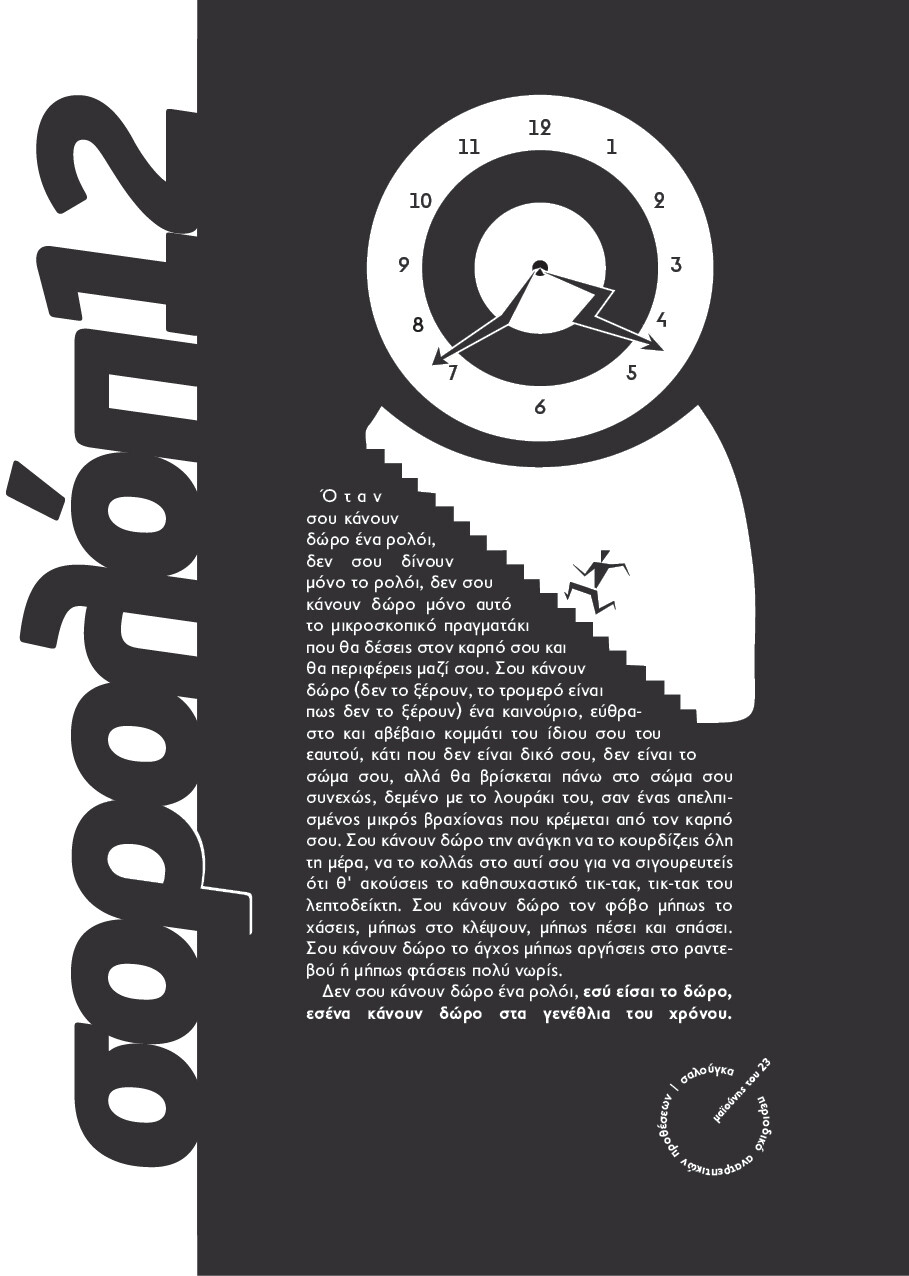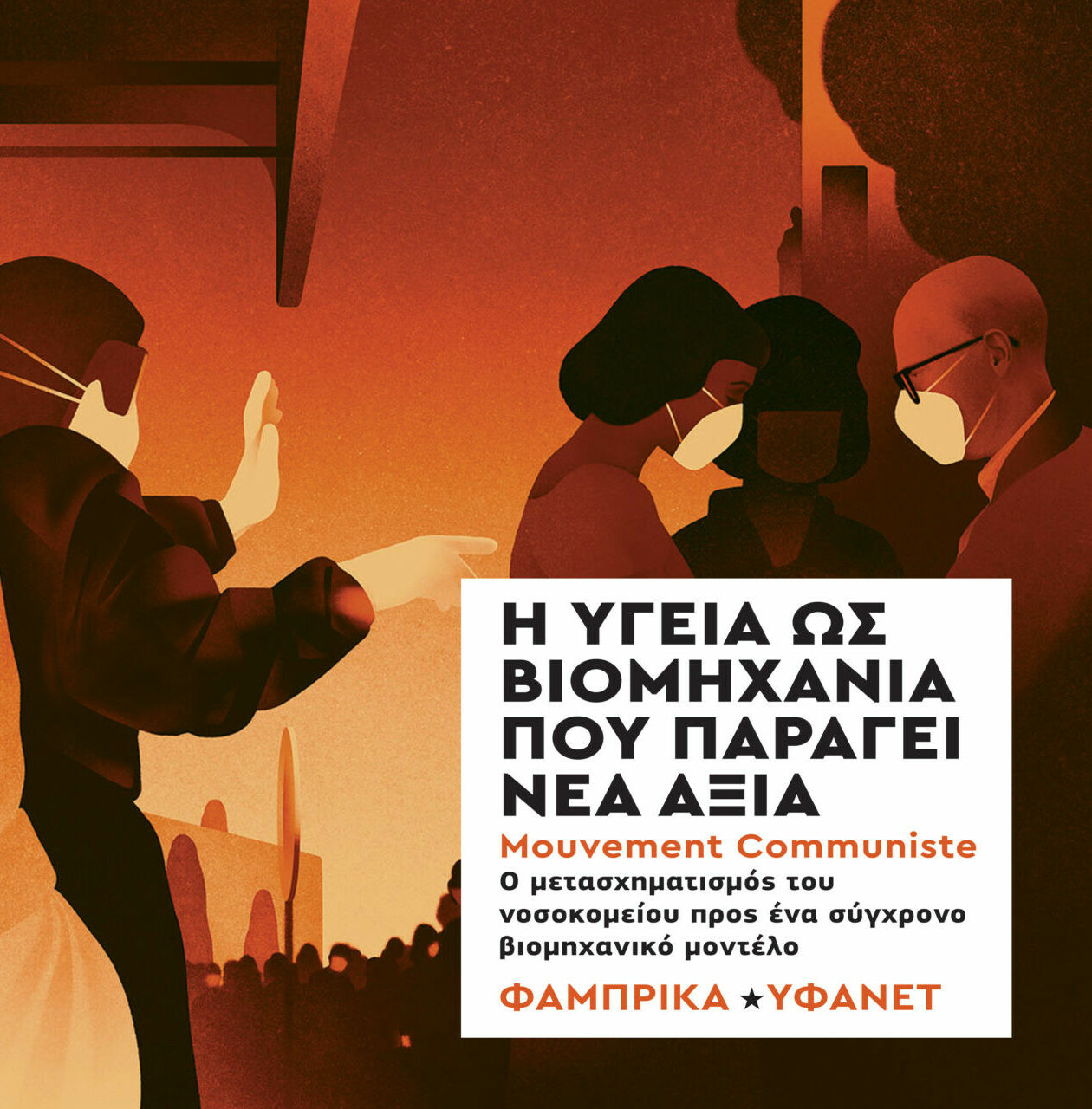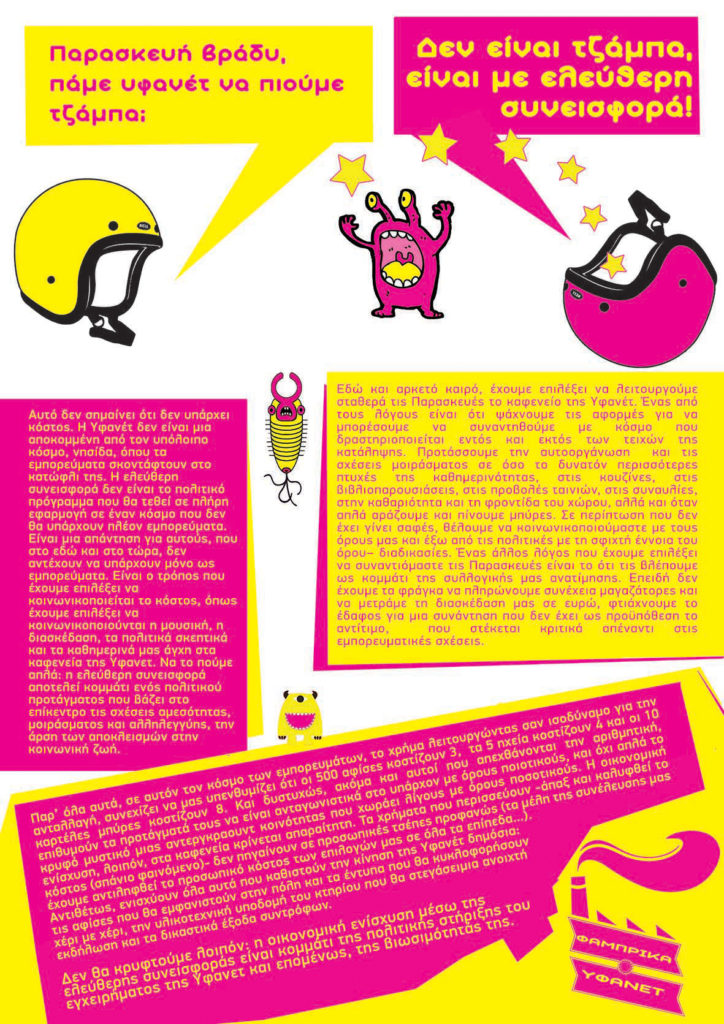Interview with a comrade from Poland that participates in the pro-abortion struggles (May 2020)
From the publication of Fabrika Yfanet Squat, “The incision of reproduction: old and contemporary stories for the capability of abortion and the acts against it”
The pdf of the interview can be found here.
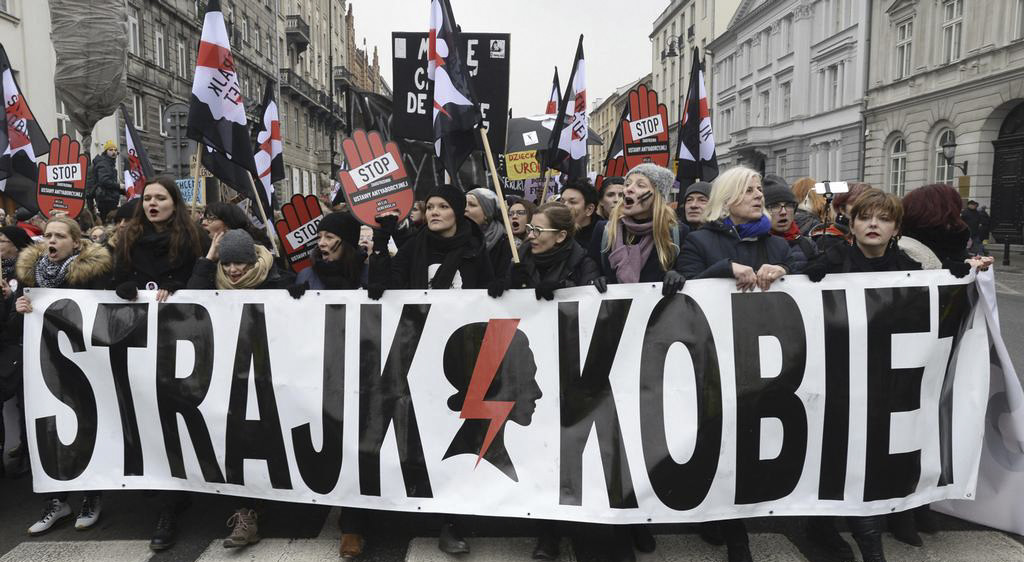
Interview with a comrade from Poland that participates in the pro-abortion struggles (May 2020)
- What was the law regarding abortions in Poland before 1993 and how was it practically implemented?
Before 1993 the Poland Act of 27 April 1956 on the conditions of admissibility of abortion allowed termination of pregnancy in three cases: if medical examination raised concerns about the health of the fetus and/or mother, if the pregnancy was an effect of crime or bacause of difficult social living conditions of the pregnant woman. The last case was being decided based on a declaration from the woman. I dont’t have no further informations about how it was implemented, but the third
case can be interpreted quite vaguely, and most importantly it responds to one of the really quite common reasons why women don’t want to have children.2. Which social and political changes appeared in the 1980s – 1990s that led to the reformation of the abortion law in 1993 to a more restrictive direction? By which procedure did the reformation happen and who was involved in the shaping of the new directions of the law.
The church was critical about the 1956 Act from the very beginning, but it wasnt until late 70’s that abortion law started to become an issue for the public opinion. In 1977 Polski Komitet Obrony Życia, Rodziny i Narodu (Polish Committee for the Defense of Life, Family and Nation)
started a petition demanding changes in the law concerning abortion. They collected 12 thousand signatures, but Sejm (polish parliament) dismissed the petition, stating that current law protects women from unsafe abortions carried out under conditions endangering their health and life. Nevertheless the petition was a victory for the Committee as – according to the co-creator of the petition Marian Barański – their aim was not to actually change the law, but to make the topic enter the public discourse. And at that they succeded.During the 80’s catholic church and anti-choice organizations conducted a series of anti-abortion campaigns and protests. As an effect discussions about abortion became more frequent and heated. It’s worth noting as an undeniable victory for the anti-choice organizations and a failure for the pro-abortion movement that over the years as war on abortion continued, language gradually changed from a scentifically objective to an emotionally charged one used by anti-choice organizations (calling themselves ‘pro-life’ being one example).In 1987 a catholic organization Klub Inteligencji Katolickiej appealed to Sejm with a demand to substitute the existing abortion law with a ‘parenthood protection’ bill. Commission was formed, and the project entered Sejm for many upcoming years, resulting in creating first drafts of the anti-abortion law existing in poland today.
In 1989 CBOS (Public Opinion Research Center) conducted a survey, asking respondents about their opinions on the law concerning abortions. 20% of respondents wanted a total ban on abortion, 25% wanted the right to terminate pregnancies without restrictions and more than half declared
they would vote for abortion without restrictions in a potential referendum. Over the next four years CBOS repeated the survey many times. It shows how the topic of abortion became a public matter,
discussed as an opinion.In 1992, as a response to the first bill draft envisaging a complete ban on abortion and punishment for women terminating their pregnancies, an initiative known today as Bujak Committees, was established. Their purpose was to collect signatures for a national referendum on the matter. With a mass involvement of politicians, organizations, activists and people normally not active in the field of social activism, between 1,300,00 and 1,700,000 signatures were collected. Mass protests took
place in several cities in Poland as well. Yet despite social resistance, Sejm rejected the request for a referendum.The new law came to life on January 7th, 1993. The law, still valid and unchanged today, protects the fetus above the wellbeing of the gestator, and allows terminating pregnancy only under three following conditions: if pregnancy poses a threat to life or health of the pregnant woman, if
prenatal or other medical indications demonstrate a high probability of severe and irreversible fetal impairment or an incurable disease threatening its life, or if the pregnancy is an effect of a punishable act such as rape or incest. The implementation of law was met with nation-wide mass protests. In this short video, put together on the occasion of mass mobilization against further tightening the abortion law in 2016, you can see some footage from the protests in 1993:
https://www.youtube.com/watchv=8EHJPyd8iyM&list=LLLCoXQlY_6I69sA_SXlqgtA&index=6&t=0sCatholic Church was heavily involved in shaping of the new law, the first draft being actually prepared by a Comission consisting of Episcopate members. One of the reasons is that after system
transformation in 1989, Church became once again an important political player, as opposed to being put aside during secular doctrine of Polish People’s Republic. The Solidarność movement (leading actor in overthrowing communism in the 80’s) was built in part on redefining polishness around traditions and customs that according to polish mythology were repressed during communism – a political system forced on Poles by a foreign invader – one of them being catholicism and church.3. What was the reaction of the people after the change of the law and how were they affected by it? What practical changes happened in the procedure of abortion and how do women administer the issue all those years?
Practical changes in the procedure of abortion led to the development of a backstreet abortion industry and in effect – the prices went up above the ceilling, heavily limitingaccess to it. Before home abortion with pills was popularized, the most popular method of terminating ones
pregnancy was to travel to Germany or Slovenia – a country with legal system allowing abortion without restrictions – and getting one in a private clinic. This was (is) obviously very money- and time consuming. Of course in the aftermath abortion-tourism buisnesses started to emerge, taking advantage of people in desperate position, offering travel to the clinic abroad with a huge provision, cutting the costs of the medical procedure by using un-sterile equipment, etc. All of this helped creating a stigma around abortion as something not only sinful but also extremely dangerous, and coined into the liberal discourse that getting an abortion is always a traumatizing event. Thanks to the amazing job of Abortion Dream Team and many years of radical feminists work this discourse is now changing and the experience of abortion is slowly becoming normalized, as many women feel encouraged to speak up about their abortion experience. Unfortunately what does not change is that as long as we cannot get legal access to abortion on demand, somebody will try to profit from your vulnerability. Since abortion with pills became a popular method of terminating ones pregnancy, one has to be careful and aware of fake webpages selling fake pills for prices even twice as big as the real cost – unfortunately there are many of them.
- Which is the general opinion of the people on the abortion practice? Does it exist a big abortion/anti-abortion movement? Which parts of the society does it contain and affect?
Majority of people support keeping the law concerning abortions as it is now. Unfortunately, the conviction is still prevalent that abortion always means drama in a woman life and therefore the numer of it should be kept minimal. In 2017 Abortion Dream Team came up with a slogan
‘Abortion is OK!’ as means to normalize abortions. They posed in t-shirts with that slogan on a cover of a popular liberal feminist magazine and it sparked a huge debate with the premise that saying
‘Abortion is OK’ may be going a bit too far. On numerous occasions this slogan has proven itself to be the most radical one, and what saddens me is that you often hear criticism about it from people describing themselves as leftist. Many of them support the right to abortion without restrictions, but wouldn’t like to see it normalized. Still, the slogan is quite popular and thanks to collective effort of many feminists, gains more and more support.
Albeit there is a lot of people who support the right to terminate pregnancies to some extent, I would say that the movement demanding the right to abortion without restrictions is rather small – but fierce. Some of the most radical minds of the leftist movement in Poland can be found in pro-abortion groups. Revolutionary groups worth mentioning are Abortion Dream Team, doing an amazing job by working on normalizing abortion as an experience that 1 out of 3 women reportedly has had at one point in life according to staticstics and destigmatizing abortion; Porozumienie Kobiet 8 Marca that has been organizing feminist demonstrations with huge focus on abortion on 8th of March for 20 years; Marsz dla Bezpiecznej Aborcji(March for Safe Abortion) – a focus group
organising yearly demonstrations on International Safe Abortion Day, and Abortion Without Borders – group helping with getting access to abortion to people who need ot, let it be consueling, ordering pills or planning a trip to a clinic abroad. We all come from a point of view that abortion is more of a practical thing and a part of life, less a topic for debate between politicians. Our rights are not up for a debate!
Anti-abortion movement is also quite small, but they have the support of the government and the church, as well as good financial support. They are doing some street agitating, and usually people are rather hostile towards them, thanks to their aggressive, anti-social tactics: they can often be met in crowded places carrying huge banners with bloody pictures of disembodied late-stage mammal fetuses. They also have a tracks roaming the streets of many cities in poland, showing similair
picture and terrorizing people with infants cry played throug the megaphones. The cars often get destroyed.
It should not be forgotten though that they are in fact dangerous and should be observed carefully. Espescially now there is a fertile ground for them to grow. In the past few days, a series of worrying events happened. A new president of the supreme court has been nominated: Aleksander Stępkowski, a former leader of Ordo Iuris – an influential conservative, catholic, anti-abortion group agitating for full ban on abortions. On the same day Minister of Justice has publicly honoured
with a medal one anti-abortion activist who has harrased to death a teenager who attempted to get an abortion. Encouraged, anti-abortion people started a new tactic: they take advantage of our solidarity and set up fake pages on social media or infiltrate support groups, posing as people or organisations offering help with getting access to abortion. They then lure people intogiving them their data or simply mislead them about the procedure.
5. How did new proposals for further tightening of the law regarding abortions appear? Which were the modifications introduced in the 2016 bill and who was responsible for the drafting of the bill? How is it connected to other laws of the polish government e.g. the law for banning sexual education from schools?
The bill, called Stop Abortion demands to expunge the possibility of terminating ones pregnancy due to irreversible fetal impairment or an incurable disease threatening its life. Both – sexual education ban, hate towards LGBTQ+ people and abortion ban – come from initiatives and organizations that are usually interlaced between each other and represent far-right, conservative, misoginyst ideologies and are of close ties to the catholic church, who is a big political player in poland.
6. How did people who support the right to abortions react? How was the “Black Monday” protest organized and which was its impact?
It’s true to say that Black Monday was the biggest demontration in poland since 1989, with estimated 150,000 participants nationwide. As then-prime minister Beata Szydłoannounced governments plan to put further restrictions on abortion in 2015, the Faceook group called
“Dziewuchy Dziewuchom” (Gals for Gald) was quickly formed. In just a few hours, it was joined by thousands of people who came together because of the urgent need to react. Together they decided that they will act without explicitly party or organizational affiliation. Protests were
organized in many cities and towns. Hanger became a symbol for those protests, as it is an unfamous tool used to perform abortions – often unsafe and resulting in death – in former times. Different social actions accompanied the protests, like people sending hangers to politicians supporting the ban, or letters with womens desriptions of their periods as part of social action called “Difficult Period for the Government”. At the same time “Save the Women” committee was formed,
collecting signatures under tthe draft law liberalizing abortion regulations.
In September 2016 when Sejm was debating about two projects – Save the Women and Stop Abortion (that demands to expunge the possibility of terminating ones pregnancy due to irreversible fetal impairment or an incurable disease threatening its life) – two protests (organized by leftist or liberal political parties) took place. Although numerous, they didn’t have much impact on the government, and it became clear that more radical action is needed. New group emerged – Nationwide Polish Women Stike -formed mostly by women who met in action via Dziewuchy
Dziewuchom facebook group. They decided to organise a strike, modeled on the historical action in Iceland. The idea was that women across Poland will stop working for one day, and instead of going to work, they will demonstrate. The strike took place on 3rd of October 2016 in vaious forms. The culmination point was a demontration in Warsaw, but there were also many demonstrations in other cities. The women who couldn’t take a day off from work, dressed on that day in black, schools organized special lectures on women’s rights, etc. The demontrations were joined by women and men of many generations, including also young girls, for whom Black Monday was an
initiating point leading them to activism.
The size and scale of strike made an impression on the government – two days after the demonstrations, the Sejm has rejected the controversial law. The government has announced that it intends to amend the law by exacerbating it and eliminating abortion in Poland but using different
approach, e.g. financial help for women who decide to continue the pregnancy with terminally ill fetus. The movement didn’t stop though, and demonstrations continued in many cities for weeks to follow.
7. Which people participate and support this movement? Are there any other groups that support its action or do they organize initiatives with other groups? In which way are people in the movement organized, through assemblies, horizontally? Who can participate, how often do they meet?
Ever since the draft of Stop Abortion bill appeared in Sejm, it comes back regularly every year. The protests, refering original Black Monday strike, are also organized then, still big and numerous. The movement called on that occasion is not homogenous in its political agenda and it is sometimes a source of conflict, as many people and groups participating in the protests do not want the law on abortion to be tightened, but do not support loosening it either. The most recognizable group that emerged from the protests of 2016 – Nationwide Polish Women Strike – started with an intention to be a horizontal group, but soon leaders emerged amongs them and the group shifted into more formalised, liberal one. Although I do not neccesarily agree with their agenda, I have to admit they have enormous organising powers when mass protests are again needed. There are also grassroot groups that emerged from the movements back then that come from a more radical point of view. One of them has been organising since 2018 an annual March for Safe Abortion, on the International Safe Abortion Day on 27th of September. There are also other informal groups, whose members are often interlacing (as it is a small world) who focus on providing direct help to the people seeking abortions, emergency contraception, etc.

